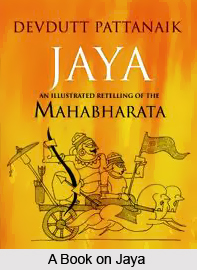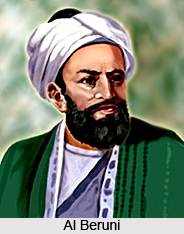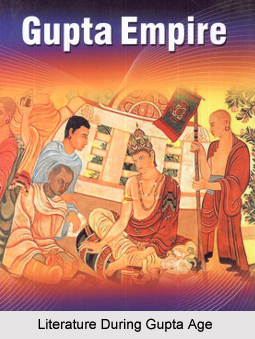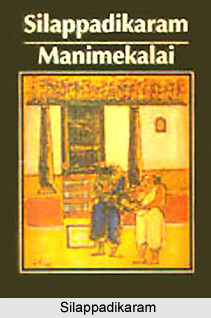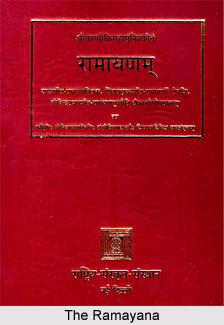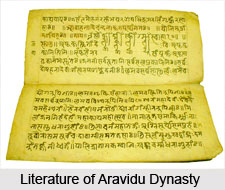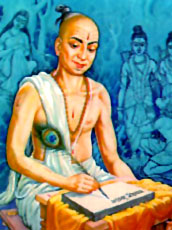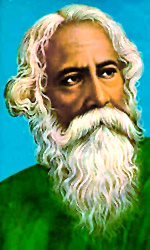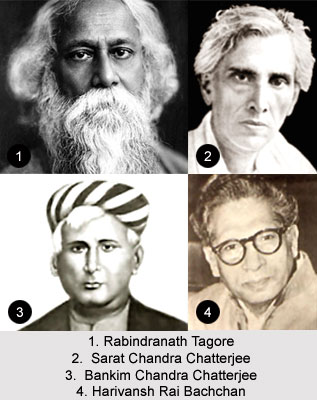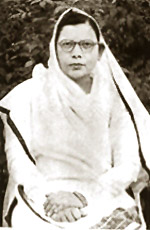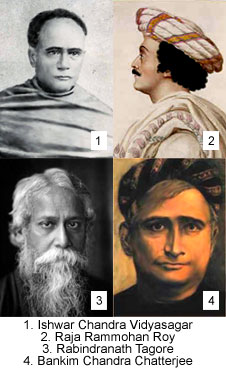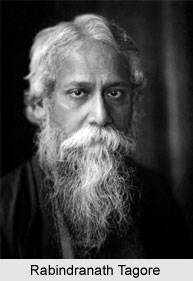 History of Punjabi drama shows a colourful progress of this literary genre. Since its very inception, Punjabi drama has always been a mix of English as well as Sanskrit elements of drama. However, the influence of English drama has always been more profound and the structure followed in Punjabi plays has mostly followed the English model. The earliest Punjabi plays are said to have started with the works of playwrights like Bhai Vir Singh (Raja Lakhdata Singh, 1910), Kirpa Sagar (Maharaja Ranjit Singh and Dido Jamval), Bawa Budh Singh (1878-1931) (Chander Hart and Mundri Chhall (The Magical Ring)), Charan Singh (1853-1908) (Rani Sarab Kaur), Gurbax Singh Barrister (Mohan Bhaia, 1912), Brij Lai Shastri (Puraan Natak, 1919, Partigya, Vasva Datta, 1925). However, the first properly structured and successful plays in Punjabi have been written by Ishwar Chander Nanda. He was greatly influenced by Western dramas and wrote a number of one act plays as well as short playe before moving on to full length plays. The topics he dealt with in his plays were most often contemporary social issues and these gained a lot of popularity with the audience. There were a number of playwrights who followed Nanda and were quite popular in the field of Punjabi literature. They include names like Harcharan Singh, Joshua Fazal-ud-din, Gurdial Singh Khosla, Roshan Lai Ahuja etc. Harcharan Singh contributed a lot towards furthering and nurturing popular drama.
History of Punjabi drama shows a colourful progress of this literary genre. Since its very inception, Punjabi drama has always been a mix of English as well as Sanskrit elements of drama. However, the influence of English drama has always been more profound and the structure followed in Punjabi plays has mostly followed the English model. The earliest Punjabi plays are said to have started with the works of playwrights like Bhai Vir Singh (Raja Lakhdata Singh, 1910), Kirpa Sagar (Maharaja Ranjit Singh and Dido Jamval), Bawa Budh Singh (1878-1931) (Chander Hart and Mundri Chhall (The Magical Ring)), Charan Singh (1853-1908) (Rani Sarab Kaur), Gurbax Singh Barrister (Mohan Bhaia, 1912), Brij Lai Shastri (Puraan Natak, 1919, Partigya, Vasva Datta, 1925). However, the first properly structured and successful plays in Punjabi have been written by Ishwar Chander Nanda. He was greatly influenced by Western dramas and wrote a number of one act plays as well as short playe before moving on to full length plays. The topics he dealt with in his plays were most often contemporary social issues and these gained a lot of popularity with the audience. There were a number of playwrights who followed Nanda and were quite popular in the field of Punjabi literature. They include names like Harcharan Singh, Joshua Fazal-ud-din, Gurdial Singh Khosla, Roshan Lai Ahuja etc. Harcharan Singh contributed a lot towards furthering and nurturing popular drama.
There is no doubt that Harcharan Singh and the playwrights who followed his lead added quantitatively to the body of dramatic literature in Punjabi, but they have offered little by way of quality, which appeared only when stalwarts like Sant Singh Sekhon, Balwant Gargi, and Amrik Singh (1921) made their contribution. These writers have brought vitality and freshness to Punjabi drama. With them began the trend of progressive writing. Sekhon has given a new dimension to Punjabi drama by means of a logical interpretation of contemporary reality. He is responsible for evolving a form of Punjabi drama that is called intellectual drama. Instead of presenting matter-of-fact details, Sekhon, in this type of play, subjects themes to intellectual insight and philosophical scrutiny. Sekhon, in his more than a dozen plays, raised exciting debate on various themes of contemporary social and cultural relevance, which has made some of his plays very controversial. Some of his very well known plays include Kalakar (The Artist, 1946), Moyian Sar na Kai (Gone and Forgotten), Bern Bandh Na Sakyo (You Did Not Bind the Logs of the Float), Narki (Denizens of Hell, 1952), Damyanti (1962), and Miner Pyara (The Dear Friend).
A split developed during this time between literary drama and drama meant for the stage. The plays of Sant Singh Sekhon, though impressive, were scarcely staged. Defending his plays, he argued that they could not be staged for they represented times ahead of him. The existing theater was not adequate to produce his plays because of its limitations. On the other hand, some Punjabi critics characterized these plays as literary plays at best, having no potential to turn into a stage reality. Roshan Lai Ahuja accepted that there could be both kinds of plays- literary meant for reading only and others worthy of stage production. Thus, for some time, there existed a state of isolation between the literary, on one hand, and stage drama, on the other, in Punjabi. Balwant Gargi, one of the most distinguished names in Punjabi drama and theater arts, brought an end to this controversy by laying the foundations of a mature, professional theater in Punjabi. His plays are a happy fusion between the requirements of stage and the demands of literature. The dialogue of his plays has a literary grace and poetic charm. Punjabi folklore in its diverse manifestations lends meaning to his plays and makes them memorable.
His earliest work, Loha Kut (The Blacksmith, 1944), created a stir in Punjabi literary circles for its unusual theme and distinct form. It is a very sensitive play with an equally unusual theme: the problem of suppressed passions. In it, the inner dreams and aspirations of both mother and daughter are ruthlessly crushed in the suffocating atmosphere of the blacksmith Kaku`s home. The daughter revolts against the orthodoxy and oppression and elopes with her sweetheart. The mother follows the example of her daughter and leaves Kaku, even though they have been married 18 years. At a symbolic level, the play deals with the elemental and primordial in human nature.
Gargi, under the impact of pragtivad (progressive movement), wrote a number of plays with a Marxist angle. Notable among them are Ghuggi (The Dove), Biswedar (The Feudal Lord), Sail Pathar (Still Stones), Kesro (Name of Woman), and Girjhan (Vultures, 1951). These plays are on themes such as the world peace movement, the agrarian struggle, national reconstruction etc. In his Dhuni di Agg (The Dark Ritual), he breaks with the realistic tradition and represents love and hatred as primal forces through the symbolism of red flames of fire contrasted with the darkness of night. Among his plays based on Marxist ideology, Kanak di Bali (Stem of Wheat) departs from realistic tradition and introduces an element of lyricality from the indigenous folklore. He attains a rare height in Sultan Razia, a historical play that deals with an action-packed period of Indian history, from the dying Iltutmish to the death of Razia Sultana. It is a period of uncertainty and conspiracies resulting in ruthless killings for the throne. This play in its Hindi version was staged by the National School of Drama under the directorship of E. Alkazi and thus brought Gargi to national fame. In another play, Saunkan (The Other Wife, 1979), he deals with the triple relationship among mother, son, and daughter. Gargi is also an author of a scholarly treatise on Indian stagecraft entitled Bharti Drama, which won him a Sahitya Akademi Award.
Among the older generation, Kartar Singh Duggal, a leading fiction writer, wrote plays that have been produced mainly by All India Radio. He is credited with developing a form of the radio play in Punjabi. To meet the needs of the radio play, he uses his characters as symbols. His play Puranian Botlan (The Old Bottles) is a meaningful critique of the corrupt behavior of the urban middle class. His other notable plays include Auh Gaye Sajjan Auh Gaye (There Goes Our Good Friend, 1942), Ik Siffer Siffer (One Zero Makes Zero, 1941), and Mitha Pant (The Sweet Water), all of which have been produced successfully several times over the radio. Duggal in these plays seems to have been impressed by the technique of T. S. Eliot and Christopher Frye in the matter of the use of rhythmic prose in his plays.
Most of the playwrights of the pre-independence period continued writing after independence, and some, like Gurdial Singh Khosla, Harcharan Singh, Kartar Singh Duggal, and Sant Singh Sekhon, wrote plays on the problems of rehabilitation of refugees following in the wake of partition of the country, yet a group of new young writers, namely, Amrik Singh, Harsaran Singh (1929-94), Gurcharan Singh Jasuja (1925), Surjit Singh Sethi (1928), Kapur Singh Ghuman (1927-84), and Paritosh Gargi (1923), introduced a few new themes and techniques in their plays.
